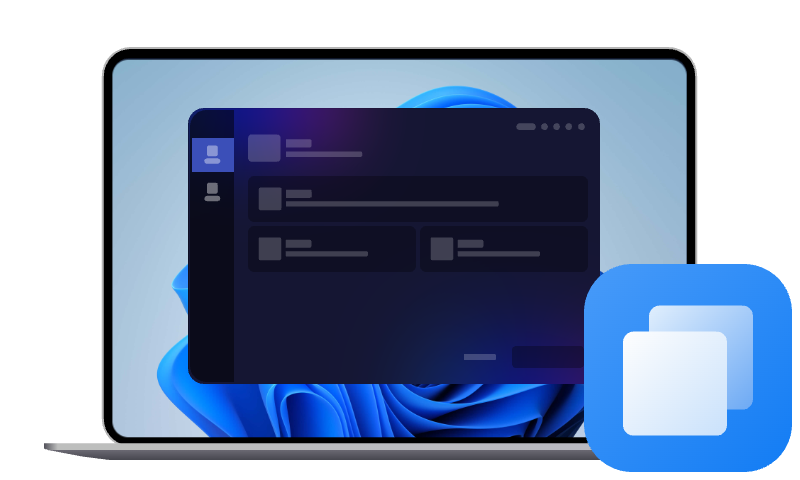Solved | External Hard Drive Clicking and Not Showing up
This article covers some useful solutions to fix external hard drive clicking and not showing up, as well as the best way to replace your external hard drive without losing anything.
Clicking noise on my external hard drive and won't show up
When I plug in my Seagate external HDD, it starts to make clicking sounds, and it doesn't get recognized by my computer. Why is my external hard drive clicking and not showing up? I have stored a lot of photos on it, will I lose all my data?
Why is My Hard Drive Clicking and Not Detected?
Clicking hard drive, also called hard drive click of death, is an annoying problem if you are on a big project. This issue often indicates a hardware malfunction, where the drive's read/write heads fail to function correctly.Here are a few common reasons why the external hard drive making noise but not working problem happens:
- Mechanical wear - When the internal components of disk wear out or get damaged, clicking noises can follow.
- Insufficient power supply - A weak or unstable power source can prevent the drive from spinning up correctly, probably causing external hard drive not showing up clicking sound.
- Damaged USB cable or port - Incompatible or faulty cables may cause the computer to not recognize the disk correctly, leading to external hard disk making noise and not detecting.
- Corrupted firmware or drivers - Your computer may not be able to recognize the drive due to software-related damaged disk drivers.
- Service area problems - The service area is the part of the hard disk that stores important manufacturer data needed to run the drive. If the hard disk has a module read error or is damaged, the actuator arm moves back and forth trying to find the data, creating a clicking sound.
Best way to clone your external hard drive for seamless replacement without losing anything.
How to Fix External Hard Drive Clicking and Not Showing up
Now that you have a general idea of what might be causing the external hard drive making noise and not working problem, let's look at how to fix it.
Method 1. Restart Your Computer
Sometimes, a simple system reboot can be the quickest external hard drive clicking sound fix if you have not tried this. Disconnect the external hard drive, restart your computer, and then reconnect the drive to see if it's detected.
Method 2. Check External Hard Drive Connection
A loose or faulty USB cable or port can be the hidden culprit behind a drive recognition issue. So, when a clicking hard drive happens, like Seagate hard disk clicking sound and not detected, you can try the following:
- Connect your external drive directly to the IDE/SATA connector on the motherboard.
- Try a different USB cable, preferably one from a working device.
- Use another USB port, preferably one located on the back panel of the desktop.
Method 3. Reset/Update Disk Drivers
Outdated or corrupted disk drivers can prevent the drive from being recognized. In such a case, you could update or reset the drivers to resolve the external hard drive makes noise but doesn't show up error:
Step 1. Go to the Start menu on Windows and select Device Manager to open this application.
Step 2. Expand Disk Drives and locate your external drive (it may appear as Unknown Device).
Step 3. Right-click it and choose Update driver. You could also try uninstalling the driver and then reinstalling it to solve it.
Replace Your External Hard Drive without Data Loss
When the external hard drive clicking and not showing up happens, it may be time to replace it. This is because hard disks inevitably develop a variety of problems as they are used for a long time. So, after you try the above solutions to make the disk recognizable, you can clone your external hard drive to a new drive, which allows you to replace it without losing anything before the drive fails completely.
AOMEI Cloner is a reputable cloning tool that helps you migrate everything from one drive to another seamlessly. This software offers Sector By Sector Clone to copy every bit from your external drive; if there are bad sectors on it, it can also run Intelligent Clone to skip damaged sectors and copy only used space.
- Its Disk Clone allows you to clone entire hard drive, and its System Clone helps to migrate only OS to a new drive.
- It supports all drive types, enabling you to clone HDD to HDD, HDD to SSD, clone USB drives, clone SD cards, and more.
- When cloning to an SSD, its SSD Alignment helps to boost reading and writing speeds and also extend the lifespan of the target SSD.
Download the AOMEI Cloner software now and learn how to clone your external hard drive with it for a secure disk replacement without data loss.
Step 1. Connect the source external drive and the target disk to computer, and make sure they are detectable.
Step 2. Launch the software, and select Clone and then Disk Clone.
Step 3. Select the source external disk you want to clone and click Next. Then, select the destination disk you want to save cloned data and click Next.
Step 4. Finally, confirm your cloning options and click on Start Clone.
- Don’t forget to tick SSD Alignment to boost the performance of the destination SSD if you are cloning to an SSD.
- DO NOT check Sector By Sector Clone when you clone a larger drive to a smaller drive, as it may cause the cloning process to fail.
- You can use Edit Partitions to resize partitions on the destination disk and convert the disk type if the destination disk is different from the source disk.
Conclusion
External hard drive clicking and not showing up on your computer is a serious issue that often indicates impending drive failure. After trying the above methods to get the hard disk working properly, it is highly recommended to replace your external drive with a new one using the reliable cloning software AOMEI Cloner, which is capable of cloning hard drive with bad sectors, cloning boot drive without reinstalling, etc.

